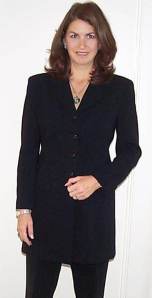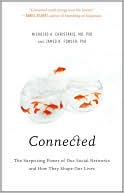
Mentor Resources a leading provider of software for the administration of formal mentoring programs. Many Human Resources professionals refer to the largest provider of this type of software as Match.com for the workplace. Using that analogy, WisdomShare™ is the eHarmony of the workplace as our match is based on skills, education, job level AND over a dozen personality characteristics.
 Based-on the ideas of strength-based learning, WisdomShare™ was developed with the premise that if your Mentor is successful with a personality similar to your own, you will be more motivated to adopt the Mentor’s approach and insights into the workplace. That is, if your Mentor is like you in predominantly thinking in numbers, or also irritates people with their fast, sometimes brusque, speaking style, you can learn how those personality traits have been turned to assets in your organization.
Based-on the ideas of strength-based learning, WisdomShare™ was developed with the premise that if your Mentor is successful with a personality similar to your own, you will be more motivated to adopt the Mentor’s approach and insights into the workplace. That is, if your Mentor is like you in predominantly thinking in numbers, or also irritates people with their fast, sometimes brusque, speaking style, you can learn how those personality traits have been turned to assets in your organization.
What we find is that people clickand like one another. Mentoring software matches can produce a blind date, although that has not been the experience described by participants in our client’s programs. Many of the pairs matched by WisdomShare™ remain in-touch and describe themselves as friends beyond the duration of the mentoring program.
But does it matter? Companies exist to create products and services and generate a profit – not to create warm-feelings and friendships among co-workers. Human Resource professionals want to see higher retention (lower hiring and training costs), higher engagement (resulting in greater workplace productivity) and faster transfer of skills among employees. Intuitively, that click should produce better results from the mentoring program.
 The book Connected : The Surprising Power of Our Social Networks and How They Shape Our Lives, by Nicholas Christakis and James Fowler gave us a new perspective on the question. Everyone seems to be talking about how we, as individuals, connect to others and how newer technologies are changing our networks.
The book Connected : The Surprising Power of Our Social Networks and How They Shape Our Lives, by Nicholas Christakis and James Fowler gave us a new perspective on the question. Everyone seems to be talking about how we, as individuals, connect to others and how newer technologies are changing our networks.
Christakis and Fowler have written a book that is clear and interesting. The authors explore network contagion in back pain, suicide, politics and emotions. (We’ve all experienced offices where morale is low and felt it spread from person to person. Neuroscientist can demonstrate the limbic system in our brains mirrors the emotional state of our coworkers.)
It is possible take these ideas of Christakis and Fowler and map social networks within large firms. Terrance Albrecht, a researcher in the area of communication in large organizations, did this research and found that there are two networks within most companies. A job-task related communciation network and social-only communication network. (This makes sense, a second network of people with similar outside interests or shared experience who may have met through a BRG/ERG.)
The mentoring match matters because (connecting the ideas of Christakis, Fowler and Albrecht), innovation and sharing new ideas in the workplace appears to only occur when and where the work network overlaps with the social network. Albrecht found that only 13% of communication included innovative ideas, but the social network appeared to be essential for employees to develop the trust necessary to share new ideas.
We’ll write more on this in future blogs. In the meantime, please call us to discuss your firm’s mentoring program and how a great match can reduce costs through improved employee retention, or increase profitability through increased employee engagement.